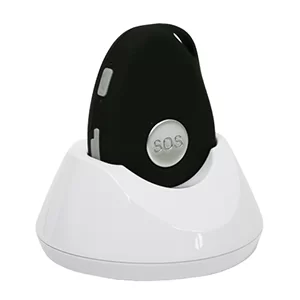The news moves so fast these days. From social media to live updates on news websites and 24-hour news channels on television, we’re more informed than ever. The days of waiting for the morning paper to learn the headlines are behind us. However, with so much information out there, it isn’t always easy to tell fact from fiction. So-called ‘fake news’ is pretty common on the internet. Before you share that news article or Facebook post, how can you be sure it’s actually true? Today, we’ll be giving you a guide to fact-checking on the internet. Keep reading to learn how to spot fake news and misinformation.
What is ‘Fake News’?
You’re probably most familiar with the term ‘fake news’ thanks to a certain disgraced US President. However, the term existed long before Trump popularised it. According to media scholar Nolan Higdon, fake news is “false or misleading content presented as news”. In most cases, those who publish fake news posts aim to damage someone’s reputation or make money through advertising. In addition, satirical news can sometimes be misinterpreted as truth. The risk is that misleading news stories can undermine our trust in serious news outlets.
Being able to spot fake news is crucial if you want to make informed decisions. Unfortunately, malicious persons take pleasure from spreading baseless conspiracies online, often targeting people who are disillusioned or vulnerable. Significantly, many conspiracy theories were spread during the pandemic, attempting to undermine our trust in scientific experts and encourage people to turn to radical groups who do not have our best interests at heart.
Misinformation vs Disinformation
In any discussion about online news, conspiracy theories, and fact-checking, you’ll probably come across one or both of these terms. But do you know the difference between them?
Misinformation is the act of spreading false information, regardless of the intention behind it.
Disinformation is the act of intentionally spreading false and/or manipulative information or propaganda.
How to Spot Fake News
With the sheer volume of news and information available to us, fact-checking all of it would be a full-time job. So how do you spot fake news or misinformation at a glance?
Gut Instinct
Some tell-tale signs of false or misinformation are dramatic/sensational headlines, potentially written in capital letters and/or with excessive punctuation. Misleading news stories often appeal to your emotions, particularly fear and anxiety, to try and get you to click. If it makes you feel scared, angry, or sad, that’s a big red flag. More often than not, you can trust your gut instinct to tell you that something isn’t quite right.
Be especially wary of news stories on social media. If it doesn’t come from a reputable news outlet such as BBC, Sky News, or a trustworthy newspaper, try looking elsewhere for impartial news.

Fact-Checking Fishy Headlines
If you see a story you’re unsure of, try Googling the headline word-for-word. If it’s fake or misleading, you’ll usually see fact-checking websites like Snopes.com debunking it.
You can also do a Google search for the topic of the story in question. This will give you the latest news stories from trusted sources. You can compare these to the article you’ve found and look for inconsistencies.
Most importantly, you should check the source of any news story before you take it to heart or share it. Go to their website and look for an About Us page. This page may acknowledge any political leanings the site has – or it may tell you that the site is satirical.
Finally, look through the article for links to evidence, research, and sources. If there are none, this should be a big red flag. Similarly, spelling and grammar errors are causes for concern.
Above all else, cross-referencing is your friend. If you can find multiple reputable sources reporting the same story, chances are it’s accurate. If a story only appears in one place, or only on sites with a particular political affiliation, take it with a pinch of salt or don’t read it at all. You should only share a news story online if you are confident that it is not misleading.
Viral Images
It’s not hard to spot fake news in articles and text-based posts online. But photos and videos often make the rounds on social media at lightning speed. How do you know that the caption or article truthfully describes where the photo was taken and what it contains? It’s surprisingly easy to fact-check a photo.
In Google Chrome, you can right-click on an image and click ‘Search Google for image’. This will help you verify the photo and find out where it first appeared. Many misleading news sources will reuse old photos on current stories.
Videos can be a little trickier to verify, but it’s not impossible. Try doing a Google search for words that describe the video, including what’s happening in the video and where it claims to be taken from. You’ll often find articles explaining what’s false or misleading about it.
AI Images
Images produced by “generative AI” have become increasingly prevalent on the internet, stoking up controversy. AI uses existing images to produce something “new”, and some pictures it produces can be eerily realistic. As such, AI has become a tool of many people looking to spread disinformation. There are also worries that AI could be used to affect politics.
Fortunately, there are often tell-tale signs that an image is AI-generated. Lighting may be inconsistent, hands may have too many fingers, and the image will often look like it is sharper than a normal photograph. There is also a style to the colouration that looks like a photo filter. The BBC have provided a guide to spotting AI generated images.
Confirmation Bias
We all have certain biases and preconceptions – it’s part of human nature. When it comes to online news, it’s helpful to understand confirmation bias. This is a tendency to seek and retain information that supports our existing beliefs, while unconsciously ignoring information that challenges them.
Social media can amplify our biases. Most social media sites use filters to only show us information that we are likely to agree with. For this reason, lots of people say that social media is increasing the political divides in our society. Luckily, lots of social media platforms have introduced fact-checking measures which warn people when they are viewing potentially misleading content.
My loved one is sharing fake news. What do I do?
When someone you know starts sharing false information, knowingly or not, it can be a delicate situation. A gentle approach is definitely best. Ask simple questions like, “Where did you come across this?” and “Have you done any research into this topic?” Why not send them this article to help them spot fake news in the future?
Often, conspiracy theories appeal to people because they give us a sense of certainty and control during uncertain times. Unfortunately, the nature of conspiracies means that it’s difficult to debunk them with facts, especially when confirmation bias comes into play. Therefore, don’t expect to change someone’s mind straight away. However, it’s still worth challenging your loved one’s beliefs in a non-confrontational way. Try speaking to them privately over the phone or face to face rather than commenting publicly online. Try providing a reliable alternative to the information they’ve shared.
I’ve shared something online but now I’m not sure if it’s true. What do I do?
Don’t worry. If you share false information by accident, you can correct it. Follow the advice above and try to work out whether the story is true or not. When in doubt, it’s probably best to err on the side of caution.
If you can edit your post, be sure to update it with a correction. This way, people who have already interacted with your post are more likely to see it. If it’s a post you can’t correct, like a Tweet, post a new one with a correction. Be sure to delete the original Tweet too.
More Internet Advice
We hope you’ve found this article helpful. If you’d like more helpful blogs about the internet and technology, check out the articles we’ve linked below:
- How to Help Older People Use the Internet
- Teaching Modern Technology to your Elderly Loved Ones
- How to Stay Safe Online: Passwords
- How To Order Groceries Online: A Guide to Online Shopping
Personal Alarms from Careline365
For elderly people, disabled people, and their families, the pandemic is a very challenging time. We want to be sure that our loved ones are always safe in their homes. The Careline Alarm service can offer you and your family peace of mind around the clock. With our simple plug-and-play alarm systems, anyone can call for assistance with the touch of a button, day or night. Our 24-hour Care Team are expertly trained to respond to a huge range of emergency situations. Find out how the Careline Alarm service could help you by calling 0800 030 8777 today. Alternatively, get in touch online. We’ll be happy to answer any questions you may have.
You can also order a Careline alarm online. We offer a variety of alarms on different price plans to suit all kinds of budgets and needs.
Editor’s Note: This article was updated on 2nd July 2024 to reflect current information.
Essential Plan
Basic pendant
- Not included, Automatic Fall Detection
- Included, 100 Metre Range
- Included, Wearable on Wrist or Neck
- Included, Waterproof
- Included, No Need to Charge
- Included, Easy to Activate
Plug-in Base Unit
- Included, 24/7 Monitoring Service
- Included, Lifetime Warranty
- Included, Plug-In, Easy Set Up
- Not included, No Phone Line Needed
- Not included, Our Fastest Connection Time

Plug-in Base Unit + Basic pendant

Basic pendant
- Not included, Automatic Fall Detection
- Included, 100 Metre Range
- Included, Wearable on Wrist or Neck
- Included, Waterproof
- Included, No Need to Charge
- Included, Easy to Activate
Plug-in Base Unit
- Included, 24/7 Monitoring Service
- Included, Lifetime Warranty
- Included, Plug-In, Easy Set Up
- Not included, No Phone Line Needed
- Not included, Our Fastest Connection Time
Rising to £22.67 per months after 3 months
Essential+Plan
Save £80 if paid annually
SmartTrigger Pendant
- Included, Automatic Fall Detection
- Included, 600 metre range
- Included, Wearable on Wrist or Neck
- Included, Waterproof
- Included, No Need to Charge
- Included, Easy to Activate
SmartLife Hub
- Included, 24/7 Monitoring Service
- Included, Lifetime Warranty
- Included, Plug-In, Easy Set Up
- Not included, No Phone Line Needed
- Included, Our Fastest Connection Time

Rapid Connect Hub + SmartTrigger Pendant

SmartTrigger Pendant
- Included, Automatic Fall Detection
- Included, 600 metre range
- Included, Wearable on Wrist or Neck
- Included, Waterproof
- Included, No Need to Charge
- Included, Easy to Activate
SmartLife Hub
- Included, 24/7 Monitoring Service
- Included, Lifetime Warranty
- Included, Plug-In, Easy Set Up
- Not included, No Phone Line Needed
- Included, Our Fastest Connection Time
Get 3 months free by paying annually
Complete Plan
RecommendedOur Safest AlarmSave £100 if paid annually
Fall Detector
- Included, Automatic Fall Detection
- Included, 300 Metre Range
- Included, Wearable on Wrist or Neck
- Included, Waterproof
- Included, No Need to Charge
- Included, Easy to Activate
SmartLife Hub
- Included, 24/7 Monitoring Service
- Included, Lifetime Warranty
- Included, Plug-In Anywhere, Easy Set Up
- Included, No Phone Line Needed
- Included, Our Fastest Connection Time

Rapid Connect Hub + Fall Detector

Fall Detector
- Included, Automatic Fall Detection
- Included, 300 Metre Range
- Included, Wearable on Wrist or Neck
- Included, Waterproof
- Included, No Need to Charge
- Included, Easy to Activate
SmartLife Hub
- Included, 24/7 Monitoring Service
- Included, Lifetime Warranty
- Included, Plug-In Anywhere, Easy Set Up
- Included, No Phone Line Needed
- Included, Our Fastest Connection Time
Get 3 months free by paying annually
GPS Pendant Plan
Save £88 if paid annually
GPS Location Tracking + Inbuilt Speaker

- Included, Go Anywhere Alarm
- Included, GPS Alarm Pendant
- Included, GPS Location Tracking
- Included, Optional Fall Detection
- Included, Inbuilt Speaker
- Included, Charging Base Station
Get 3 months free by paying annually
GPS Pendant Plan
- Go Anywhere alarm
- GPS Alarm Pendant
- GPS Location Tracking
- Optional Fall Detection
- Inbuilt Speaker
- Charging Base Station

Get 3 months free by paying annually




